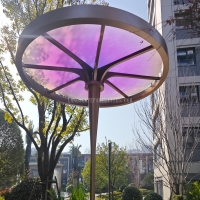Welcome to the website for landscape facilities products and knowledge.
What is the process for ensuring the bin’s materials are non-toxic and safe for public use?
Ensuring that bins are made from non-toxic and safe materials is a critical process involving multiple stages of testing and compliance. Here’s a detailed breakdown of how manufacturers guarantee public safety:
1. Material Selection: Manufacturers start by sourcing raw materials that are certified non-toxic, such as BPA-free plastics, food-grade stainless steel, or recycled polymers meeting safety standards.
2. Laboratory Testing: Samples undergo rigorous lab tests for harmful chemicals, including heavy metals (lead, cadmium) and volatile organic compounds (VOCs), ensuring compliance with international safety regulations like REACH or FDA guidelines.
3. Durability and Leachability Checks: Materials are tested for durability under extreme conditions (heat, cold, UV exposure) to prevent degradation that could release toxins. Leachability tests confirm no harmful substances seep out during use.
4. Third-Party Certification: Independent agencies (e.g., NSF, ISO) verify test results and award certifications, providing transparency and trust for consumers.
5. Ongoing Monitoring: Post-production, random batch testing ensures continued adherence to safety standards, with recalls initiated if defects are detected.
By following this stringent process, manufacturers ensure bins are safe for public use, protecting both health and the environment.
Related search:

Recommendation
Metal frame with gradient color acrylic combined with high-end shading landscape facilities